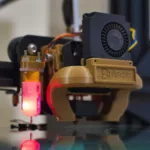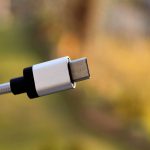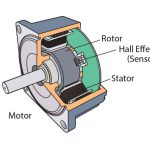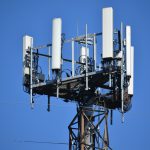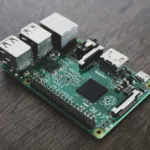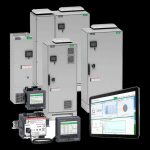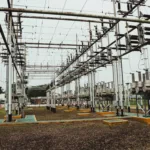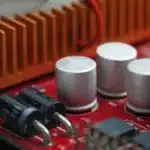
Introduction
The amalgamation of smart sensors and sensor fusion has emerged as a remarkable game-changer with unparalleled benefits and applications in multiple industrial facilities. From autonomous vehicles to industrial automation and robotics to healthcare applications, smart sensors, coupled with advanced sensor fusion techniques, have opened possibilities for unprecedented levels of data accuracy, reliability, and insight. This article explores the realm of sensor fusion technologies with smart sensors, uncovering their applications, benefits, and challenges.
Smart Sensors: The Foundation of Sensor Fusion Technology
Smart sensors are a breed different from their traditional counterparts, incorporating microprocessors, memory, and even machine learning algorithms. These sensors serve as a backbone of sensor fusion and can preprocess data locally before transmitting it to a central system, resulting in improved efficiency and provision of real-time data with reduced latency. Smart sensors differ from traditional sensors by providing processed and contextual information, reducing the computational load on the central processing unit. These intelligent sensors are particularly instrumental in achieving sensor fusion’s objectives as they can perform initial data fusion at the sensor level.
Understanding Sensor Fusion: Exploring the Significance
Sensor fusion is the process that involves combining data from multiple sensors to obtain a comprehensive and accurate view and analysis of a given environment or scenario. Sensor fusion is a popular technology that is becoming increasingly powerful due to its unrivalled benefits and sophisticated applications–thanks to the advanced smart sensor technology. Bespoke technology can significantly overcome the limitations of individual sensors by leveraging and combining each sensor’s strengths. For instance, in an autonomous car, LIDAR might detect an object’s distance, cameras serve as identification sensors, while RADAR can determine its speed. The convergence of these technologies enables drivers to make informed decisions about navigating safely. Smart sensors with advanced processing capabilities are the milestone behind efficient sensor fusion systems.
Different Smart Sensor Types in Advanced Sensor Fusion
Several smart sensors can be employed to develop sensor fusion technologies, depending on the sensor types, applications, and environments. Some of the bespoke sensors include:
- Vision Sensors – These sensors include cameras and image sensors designed to capture visual data. By leveraging techniques like optical flow, object detection, and image segmentation, vision sensors can inform about object localisation, motion, reading signs, or detect lane markings.
- LiDAR Sensors – Light Detection and Ranging sensors emit laser pulses to measure distances to objects. These sensors provide highly accurate depth perception and are commonly found in autonomous vehicles in creating 3D maps and detecting obstacles.
- Radar Sensors – Radar uses radio waves to detect objects and measure their range, velocity, and angle. It excels in challenging weather conditions and low-light scenarios, making it indispensable for aviation, maritime, and automotive industries.
- Inertial Sensors – Comprising accelerometers and gyroscopes, these sensors measure acceleration and angular velocity. They can track motion and orientation in applications ranging from navigation to virtual reality.
- Thermal Sensors – Also called temperature sensors, are sensors designed to detect temperature variations across multiple industrial applications. These sensors are significant in maintaining and regulating optimised temperature ranges for various applications and processes.
- Pressure Sensors – These sensors measure pressure in a given environment and can also determine altitude or detect weather changes.
- Environmental Sensors – These sensors monitor multiple environmental parameters like temperature, humidity, pressure, and gas concentration. Integrating environmental data into sensor fusion systems can provide access to gain insights about the environment’s impact on other sensor data.
Other smart sensors in sensor fusion systems include:
- Humidity Sensors
- Gas Sensors
- Sound Sensors
- Ultrasonic Sensors
- Infrared Sensors
- Accelerometers.
Innovative Technologies Enabling Sensor Fusion Landscape
Sensor fusion is undoubtedly transforming various aspects of modern monitoring technology. These varied technologies rely on the successful implementation and optimisation of sensor fusion systems. Here are some cutting-edge technologies that enable the vast landscape of sensor fusion:
- Kalman Filtering: It is a mathematical technique that combines noisy sensor measurements with a prediction model to get comprehensive insights about a more accurate estimate of the actual state. This technique is highly efficient and is widely used for real-time applications.
- Particle Filtering: This approach is also called Monte Carlo Localization and is used to estimate a system’s state based on possible values. This technique is especially useful in facilities with nonlinear dynamics or non-Gaussian noise.
- Sensor Alignment and Calibration: Highly precise sensor fusion heavily depends on the proper calibration and alignment of sensors. Calibration techniques involve adjusting sensor parameters to ensure consistency with minimal errors.
- Deep Learning: Machine learning models, particularly deep neural networks, have shown remarkable success in fusing sensor data. These models can learn complex patterns and relationships, making them functional tools in object recognition and scene understanding.
Sensor Fusion Technology: Challenges and Future Directions
Despite the remarkable potential of sensor fusion technology, it faces challenges, such as sensor heterogeneity, data synchronisation, and computational demands. Optimised interoperability among various sensors and maintaining real-time capabilities are ongoing areas of research and development.
The future can see sensor fusion integration with edge computing and the Internet of Things, leading to more distributed and responsive systems. Enhanced sensor miniaturisation, high energy efficiency, and adaptive algorithms will be critical for realising the sensor fusion’s full potential.
Bottom Lines
Sensor fusion with smart and advanced sensors stands as a testament to human ingenuity in creating comprehensive and accurate perceptions of the world. A revolution in the sensor fusion landscape with technological advancement can drive significant accuracy, reliability, and efficiency improvements across various applications. Last but not least, the synergistic relationship between smart sensors and sensor fusion can promise a future with safe, smarter, and more efficient processes.







